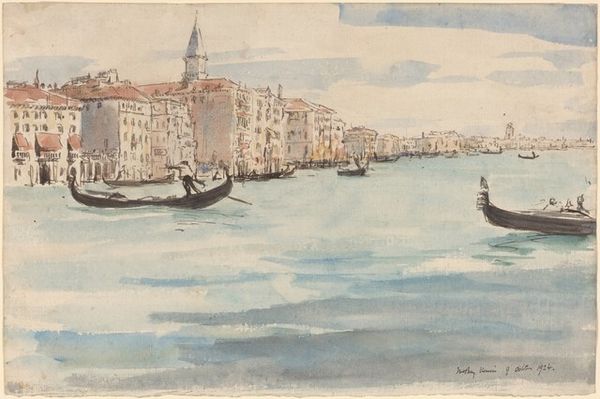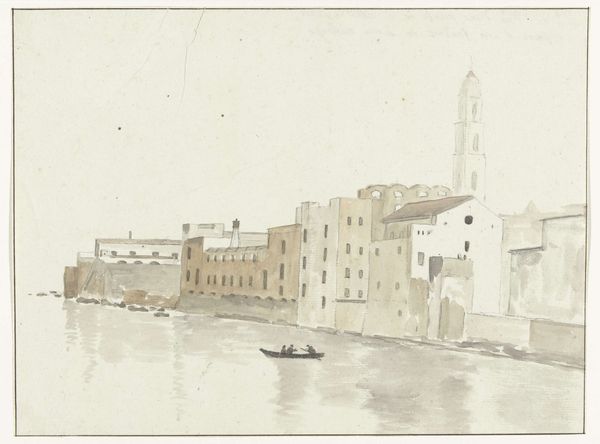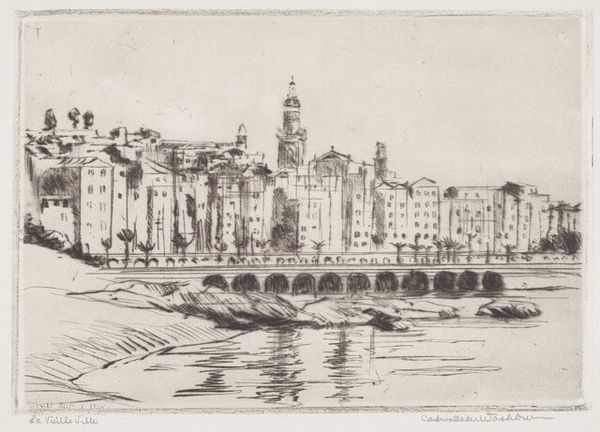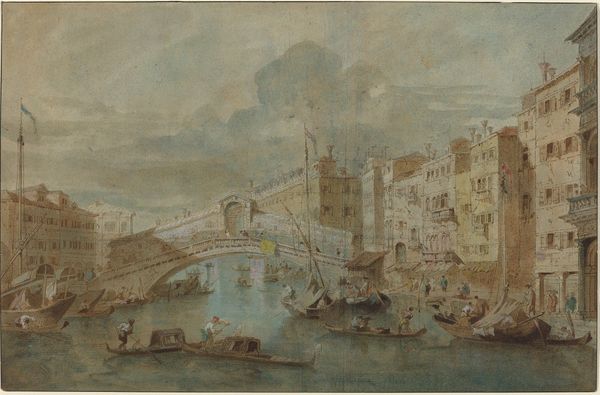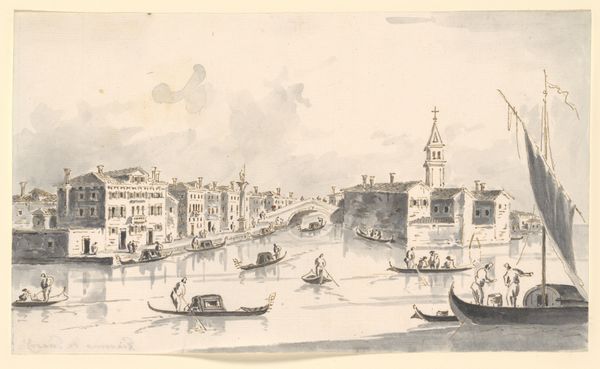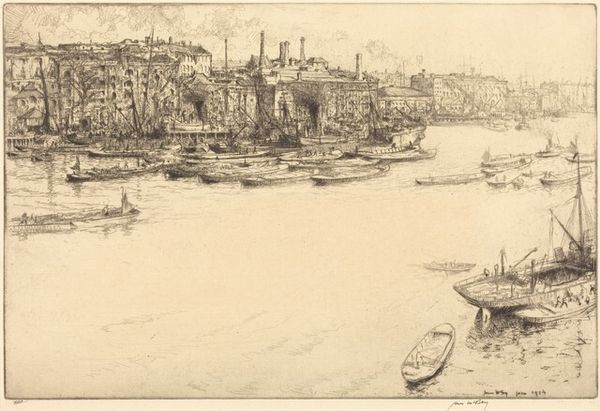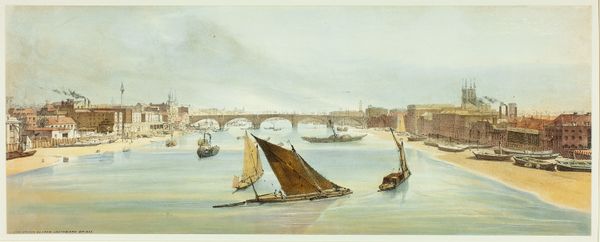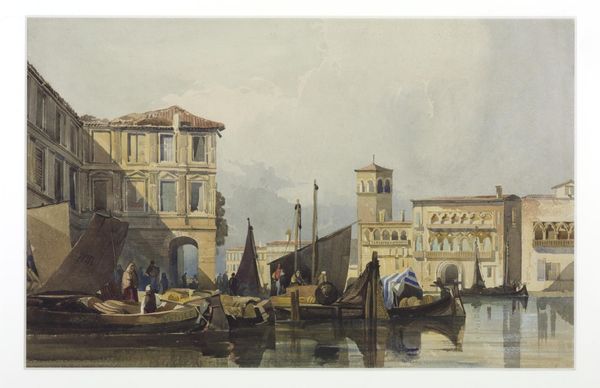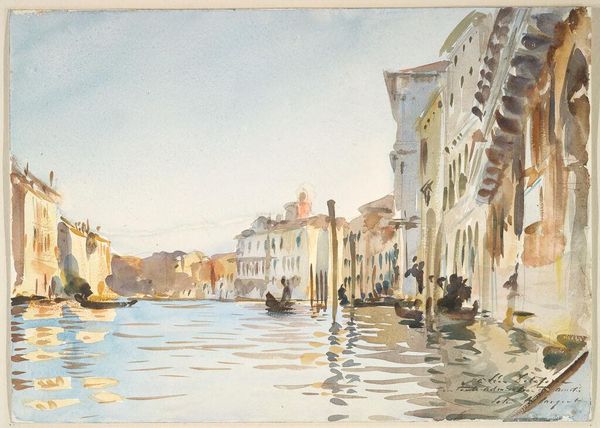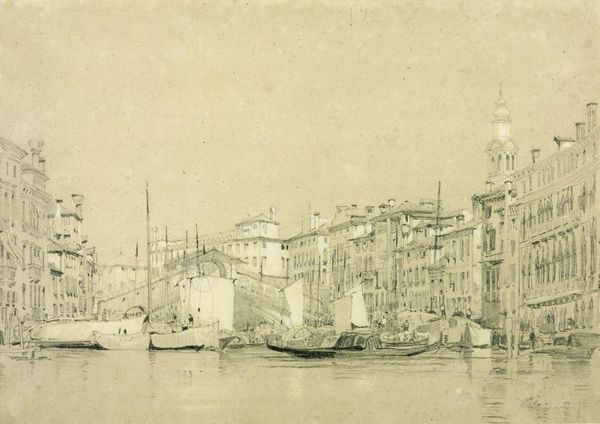
painting, watercolor
#
painting
#
landscape
#
watercolor
#
water
#
cityscape
#
modernism
#
watercolor
Dimensions: 31.5 x 50 cm
Copyright: Pyotr Konchalovsky,Fair Use
Curator: Let’s take a closer look at Pyotr Konchalovsky's "Leningrad. Neva," painted in watercolor in 1931. What are your initial thoughts? Editor: A subdued mood, certainly. The watercolor gives a misty, almost melancholic feel. The hazy light makes the architectural symbols, like the cathedral dome, seem distant and perhaps even idealized. Curator: Considering Konchalovsky's artistic trajectory, moving from early avant-garde experiments towards a more representational style, it is fascinating to examine how he grapples with depicting Soviet urban life using a traditionally bourgeois medium like watercolor. Notice the visible brushstrokes—the trace of the hand becomes integral to understanding the artist's labor. Editor: Absolutely. And within that labor, what stories are whispered? The dome, so reminiscent of Tsarist Russia, dominates the horizon, despite the Soviet context. Aren’t those boats like small reminders of a past, each carrying figures navigating a changed landscape? Is there nostalgia woven within the watercolor's fragility? Curator: Possibly. We must not disregard that those boats are very much working vessels—part of the ongoing economic activity on the Neva River. Konchalovsky chooses not to romanticize the workers; they're small, almost insignificant figures, integral to the bustling cityscape that relies heavily on resource transformation, industry, and trade along waterways. This emphasizes how integral that river is to Leningrad. Editor: I see your point, but look at how those figures are positioned. Dwarfed by the imposing buildings. Perhaps it’s speaking to the individual lost within the grand socialist project? Curator: Perhaps. But I also wonder if, through his material handling of the watercolor itself—the very conscious layering of color and the exploitation of the medium's transparency—he’s subtly pushing the boundaries of what 'Socialist Realism' could encompass. Editor: Interesting. I was locked into the symbolic, psychological undertones of that cityscape, whereas you’re framing it as an act of quiet, material resistance! Curator: It shows that the beauty of an artwork lies in its many readings. Both are there I suppose and make us think even today! Editor: Indeed! I learned a lot thanks to your points regarding Konchalovsky’s social engagement via material!
Comments
No comments
Be the first to comment and join the conversation on the ultimate creative platform.

